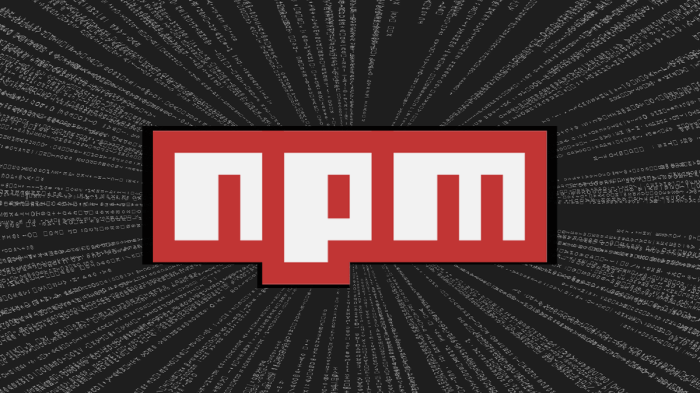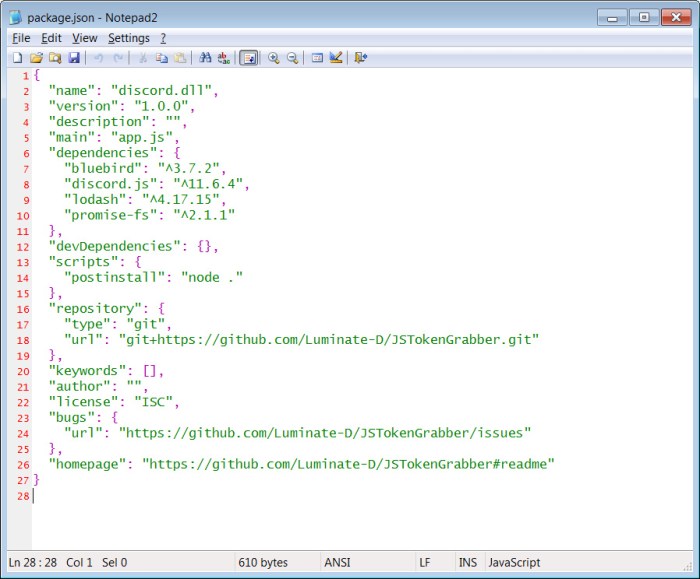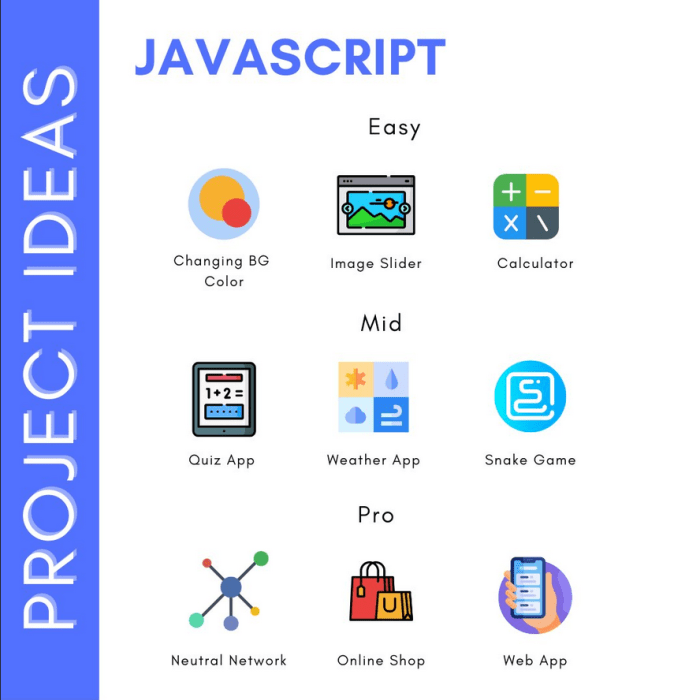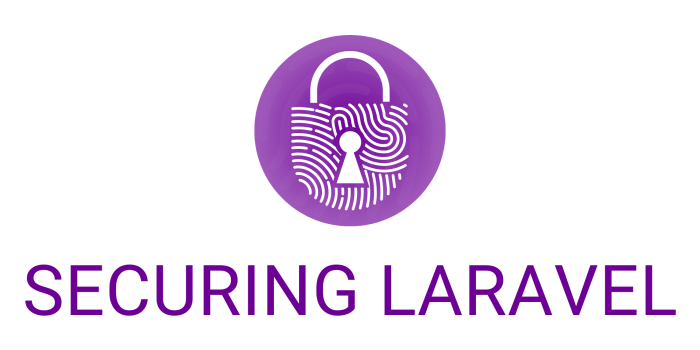280 typosquat malicious packages attacking npm developers—that’s a headline that screams “danger” in the world of software development. Imagine this: you’re building your next killer app, diligently adding packages to streamline your workflow, and BAM! You’ve unknowingly downloaded a malicious package, a digital Trojan horse cleverly disguised as a legitimate dependency. This isn’t some far-fetched sci-fi scenario; it’s a very real threat impacting developers worldwide, highlighting the vulnerabilities lurking within seemingly secure ecosystems.
Typosquatting attacks prey on human error, exploiting the tiny slip-ups we all make. A single misplaced letter in a package name can lead to devastating consequences. These malicious packages often carry payloads ranging from data theft to backdoors, potentially compromising your entire project and exposing sensitive information. This article delves into the mechanics of these attacks, the impact on developers, and crucially, how to protect yourself and your projects from this insidious threat.
The Nature of Typosquatting Attacks

Source: portswigger.net
Typosquatting, a sneaky form of malicious software distribution, preys on the human tendency to make mistakes. In the context of the npm (Node Package Manager) ecosystem, this means creating packages with names subtly different from legitimate, popular packages, hoping developers will accidentally install the wrong one. This seemingly minor typo can have significant consequences.
Typosquatting attacks against npm developers leverage the speed and convenience of package management. Developers often work quickly, searching for packages based on memory or partial recall. A slight misspelling – a missing letter, an extra character, or a similar-looking word – is all it takes for a malicious package to slip into a project. The attacker capitalizes on this human error, effectively hijacking the dependency management process.
Mechanics of Typosquatting Attacks on npm
The mechanics are deceptively simple yet highly effective. Attackers register package names on npm that are visually similar to legitimate packages. These malicious packages might contain seemingly innocuous code initially, lulling the victim into a false sense of security. However, the true payload, often a backdoor or data exfiltration mechanism, is activated later, potentially compromising sensitive information or even taking control of the victim’s system. The attack relies on the victim’s trust in the package manager and the assumption that the installed package is legitimate.
Payloads Delivered Through Malicious Typosquat Packages
Malicious typosquat packages can deliver a variety of harmful payloads. These can range from simple data theft, exfiltrating sensitive credentials or API keys, to more sophisticated attacks that install backdoors, enabling persistent access to the compromised system. Some packages might introduce cryptojacking, secretly mining cryptocurrency using the victim’s computing resources. In more severe cases, malicious code can corrupt or delete files, disrupt services, or even launch further attacks against other systems connected to the network. The impact depends on the specific payload and the security posture of the target system.
Examples of Real-World Typosquatting Incidents Involving npm Packages
Numerous real-world incidents highlight the effectiveness of typosquatting attacks. While specific details of many attacks remain undisclosed for security reasons, public reports often cite examples of packages mimicking well-known libraries. For instance, a package with a slightly altered name might appear in search results alongside a legitimate package, increasing the chance of accidental installation. The consequences can be far-reaching, impacting software integrity and potentially exposing sensitive data. Such attacks underscore the importance of thorough verification and due diligence before installing any npm package.
Comparison of Legitimate and Malicious Package Names
| Legitimate Package Name | Malicious Package Name | Difference | Potential Impact |
|---|---|---|---|
| express | expreess | Extra ‘e’ | Backdoor installation |
| react-router | react-routerr | Extra ‘r’ | Data exfiltration |
| lodash | lodashh | Extra ‘h’ | Cryptojacking |
| axios | axiox | ‘i’ replaced with ‘o’ | Remote code execution |
Impact on Developers and Projects

Source: threatpost.com
The recent surge in typosquatting attacks targeting npm developers highlights a critical vulnerability in the software development ecosystem. Installing a malicious typosquat package can have far-reaching consequences, impacting not only individual projects but also potentially compromising sensitive data and undermining the security of entire applications. Understanding these risks is crucial for developers to mitigate potential damage.
The consequences of installing a typosquat package extend beyond a simple broken build. These malicious packages often contain hidden code designed to steal credentials, exfiltrate data, or even introduce backdoors into the application. The damage can range from minor inconveniences to catastrophic security breaches, depending on the nature of the malicious code and the sensitivity of the data involved.
Consequences of Installing Malicious Packages
Installing a typosquat package can lead to a variety of negative outcomes. The attacker might gain unauthorized access to sensitive information like API keys, database credentials, or user data. The malicious code could also introduce vulnerabilities that allow for further attacks, such as remote code execution or denial-of-service attacks. Furthermore, the compromised project could become a vector for infecting other projects that depend on it, creating a cascading effect of compromised software. Imagine a scenario where a typosquat package used in a popular e-commerce platform steals customer credit card information – the repercussions would be severe, both financially and reputationally.
Security Risks Associated with Compromised Dependencies
Typosquatting attacks exploit the trust developers place in the npm ecosystem. When a developer installs a package, they implicitly trust its integrity and functionality. However, a malicious typosquat package can easily breach this trust, introducing vulnerabilities that compromise the entire project’s security. These vulnerabilities might not be immediately apparent, making them particularly dangerous. The compromised dependency can act as a silent backdoor, allowing attackers to gain access to the system at a later stage, potentially even years after the initial installation. This highlights the critical need for thorough dependency vetting. For instance, a typosquat package mimicking a widely used logging library could secretly upload sensitive data to a remote server controlled by the attacker.
Vulnerabilities Introduced by Malicious Code
The malicious code within typosquat packages can introduce a wide range of vulnerabilities. These could include, but are not limited to, data breaches, denial-of-service attacks, and the introduction of backdoors. The attacker might inject code that steals sensitive information, such as API keys or user credentials. They could also introduce code that allows for remote code execution, giving them complete control over the affected system. Furthermore, the malicious code could disrupt the normal functioning of the application, leading to denial-of-service attacks. Consider a scenario where a typosquat package used in a banking application allows an attacker to manipulate transaction data, leading to significant financial losses.
Assessing the Risk of Installing Untrusted npm Packages
Several methods exist for assessing the risk associated with installing untrusted npm packages. One crucial step is to carefully verify the package’s authenticity by checking its publisher and verifying its code integrity. Reviewing the package’s code and its dependencies can also help identify potential red flags. Using automated security tools to scan packages for known vulnerabilities is another effective method. Additionally, consulting security advisories and community reports can provide valuable insights into potential risks. For instance, a developer can compare the package’s checksum against a known good value to detect any tampering.
Stages of a Successful Typosquatting Attack
The following flowchart illustrates the stages of a successful typosquatting attack:
[Imagine a flowchart here. The flowchart would begin with the attacker registering a typosquat package. This would be followed by the developer searching for the legitimate package and mistakenly installing the malicious one. The next step would be the execution of the malicious code within the developer’s project. Finally, the attacker would gain access to sensitive data or system resources.] The attacker’s success hinges on the developer’s lack of awareness and the similarity between the malicious package name and the legitimate one. The more similar the names, the higher the chance of a successful attack.
Detection and Mitigation Strategies: 280 Typosquat Malicious Packages Attacking Npm Developers
Typosquatting attacks, while sneaky, aren’t invincible. By employing a multi-layered approach encompassing careful package selection, robust security tools, and diligent code review, developers can significantly reduce their vulnerability to these malicious packages. Let’s dive into the practical strategies for identifying and mitigating these threats.
Identifying Typosquatting Attempts During Package Installation
Careful observation is key. Before installing any npm package, meticulously compare the package name with the one you intended to install. Look for subtle differences in spelling, capitalization, or the use of similar-looking characters (like ‘0’ and ‘O’, or ‘l’ and ‘1’). Checking the package’s publisher and reviewing its description for any inconsistencies or suspicious details is also crucial. A quick search on npmjs.com itself to verify the package’s legitimacy is a good preventative measure. If anything feels off, err on the side of caution and investigate further.
Best Practices for npm Package Selection and Management
Effective package management is a cornerstone of security. Prioritize using well-established and widely used packages, as they tend to have a larger community scrutinizing their code. Always verify the package’s license compatibility with your project’s needs. Regularly update your project’s dependencies to patch vulnerabilities and stay abreast of security updates. Employ a version control system like Git to track changes and easily revert to previous versions if a compromised package is detected. Consider using a dependency management tool that allows you to lock down specific versions of packages to prevent accidental upgrades to potentially malicious versions. A well-defined dependency management strategy is a strong defense against typosquatting and other package-related vulnerabilities.
The Role of Automated Security Tools in Detecting Malicious Packages
Automated security tools offer a crucial layer of protection. Many tools scan npm packages for known vulnerabilities and suspicious code patterns. These tools can integrate directly into your development workflow, flagging potentially malicious packages before they are even installed. Some tools provide detailed reports on package dependencies, highlighting any known security risks associated with specific packages. Utilizing these tools proactively helps detect typosquatting attempts and other vulnerabilities, minimizing the risk of incorporating malicious code into your projects. Examples of such tools include Snyk, npm audit, and others that integrate with CI/CD pipelines.
Code Review’s Role in Identifying Compromised Dependencies
Code review, while time-consuming, remains a critical step in securing your projects. Thorough code review allows developers to inspect the code of dependencies (particularly newly added ones) for suspicious activities or backdoors. Experienced reviewers can often identify subtle signs of malicious code that might be missed by automated tools. Reviewing not just the code itself but also the package’s metadata and license information helps ensure that the package is legitimate and behaves as expected. This manual process complements automated tools, adding an additional layer of security.
Security Measures to Prevent Typosquatting Attacks
Implementing a comprehensive security strategy is essential. Here’s a list of proactive measures developers should take:
- Double-check package names meticulously: Pay close attention to spelling, capitalization, and similar-looking characters.
- Verify package publishers and descriptions: Ensure they align with your expectations and aren’t suspicious.
- Use reputable package sources: Stick to official package repositories and avoid untrusted sources.
- Employ automated security tools: Integrate them into your workflow for proactive vulnerability scanning.
- Conduct thorough code reviews: Scrutinize newly added dependencies for malicious code.
- Implement a robust dependency management system: Lock down package versions to prevent accidental upgrades.
- Stay updated on security advisories: Monitor security announcements from npm and other relevant sources.
- Educate your team: Ensure everyone understands the risks and best practices for package management.
The Role of the npm Registry
The npm registry, a central repository for JavaScript packages, plays a crucial role in the development ecosystem. Its security directly impacts the millions of developers relying on it daily. While npm strives to maintain a secure environment, the sheer volume of packages and the inherent vulnerabilities of open-source software present ongoing challenges. Understanding npm’s security measures, their limitations, and potential improvements is vital for a robust and trustworthy JavaScript development landscape.
Npm actively combats typosquatting through various measures. Automated systems scan for suspicious package names that closely resemble popular packages, flagging them for manual review. They also employ algorithms that detect patterns indicative of malicious intent, such as sudden spikes in downloads or unusual code behavior within a package. Furthermore, npm encourages developers to report suspicious packages, utilizing community feedback to enhance its detection capabilities.
Npm Security Measures and Their Limitations
Despite npm’s efforts, current security measures face limitations. The sheer volume of packages makes manual review a time-consuming and resource-intensive process, leaving room for malicious packages to slip through. Furthermore, sophisticated typosquatting techniques, including the use of Unicode characters or visually similar characters, can bypass basic name-matching algorithms. The reliance on community reporting also means that malicious packages might remain undetected until discovered by users, potentially leading to widespread damage before removal. Additionally, detecting malicious code within packages requires advanced analysis techniques that are not always foolproof.
Recommendations for Improving Npm Security Practices
Strengthening npm’s security requires a multi-pronged approach. Investing in more sophisticated automated detection systems, including AI-powered solutions capable of identifying subtle patterns and anomalies, is crucial. Expanding the use of code analysis tools to automatically scan packages for malicious code would further improve security. Improved collaboration with security researchers and the open-source community can also help identify vulnerabilities and improve detection capabilities. Prioritizing user education and providing clear guidelines on safe package selection practices can help developers avoid falling victim to typosquatting attacks. Finally, exploring more robust package verification methods, like code signing or formal verification techniques, could enhance the trustworthiness of packages.
Shared Responsibility for Security
Both developers and the npm registry bear responsibility for maintaining security. Developers should meticulously vet packages before incorporating them into their projects, paying close attention to package names, author reputation, and code quality. They should also report any suspicious packages to npm. The npm registry, in turn, must continue to invest in robust security measures, improve its detection capabilities, and proactively engage with the developer community to foster a secure ecosystem. A collaborative approach, with both parties actively contributing to security, is essential.
Comparison of Npm Package Verification Methods
Various methods exist for verifying npm packages, each with its own strengths and weaknesses. Choosing the right approach involves weighing the security benefits against the cost and complexity of implementation.
| Verification Method | Pros | Cons | Suitability |
|---|---|---|---|
| Manual Review | High accuracy for identified packages | Time-consuming, resource-intensive, scales poorly | Suitable for high-impact packages, limited scalability |
| Automated Scanning (Static Analysis) | Fast, scalable, identifies common vulnerabilities | Can miss sophisticated attacks, high false positive rate possible | Suitable for initial screening, complements other methods |
| Code Signing | Verifies package authenticity and integrity | Requires infrastructure, complex to implement, relies on trust in signing authority | Suitable for critical packages where strong authenticity is needed |
| Formal Verification | Provides mathematical proof of code correctness | Extremely complex, computationally expensive, limited applicability | Suitable for highly critical, safety-sensitive applications |
Future Trends and Predictions

Source: bleepstatic.com
Typosquatting attacks on npm, while currently prevalent, are far from reaching their peak sophistication. The relentless evolution of attacker techniques and the ever-expanding software supply chain guarantee a future rife with more insidious and difficult-to-detect threats. We can expect a shift towards more automated and targeted attacks, leveraging AI and machine learning to identify and exploit vulnerabilities with greater efficiency.
The future of typosquatting will likely involve a convergence of several concerning trends. Attackers will increasingly exploit the growing complexity of modern JavaScript projects, targeting less-scrutinized dependencies and leveraging techniques that obfuscate malicious code. This will make detection and mitigation far more challenging for even experienced developers.
Advanced Techniques to Bypass Security Measures
Attackers are constantly seeking ways to circumvent existing security measures. We can anticipate a rise in techniques that leverage legitimate npm packages as a springboard for malicious activity. This could involve compromising legitimate packages through supply chain attacks or using them as a cover for more subtle attacks. Imagine a scenario where a popular, trusted package is subtly modified to include a backdoor, activated only under specific conditions, making detection extremely difficult. Another emerging trend involves the use of polymorphic code – code that changes its structure to evade detection by antivirus software and static analysis tools. This makes identifying malicious packages significantly harder, requiring more sophisticated detection methods.
Developing More Resilient Security Protocols
To combat these evolving threats, developers and the npm registry itself must adopt a more proactive and multi-layered security approach. This includes implementing robust dependency management practices, employing automated security scanning tools that go beyond simple name comparisons, and fostering a culture of security awareness within development teams. Regular audits of dependencies, coupled with the use of tools that can detect obfuscated or polymorphic code, are crucial. Furthermore, stronger verification mechanisms for package publishers, potentially involving two-factor authentication and more rigorous identity verification, are needed. The npm registry could also benefit from improved threat intelligence sharing, allowing for faster identification and removal of malicious packages.
The Evolving Landscape of Software Supply Chain Security, 280 typosquat malicious packages attacking npm developers
The npm ecosystem, and indeed the entire software supply chain, is becoming increasingly complex. The reliance on third-party packages is growing exponentially, creating a larger attack surface for malicious actors. This necessitates a shift towards a more holistic approach to software supply chain security, encompassing all aspects of the development process, from initial design to deployment and maintenance. This includes not only improving security practices within individual development teams, but also collaborating across the entire supply chain to share threat intelligence and improve overall resilience. Increased transparency and traceability of software components will be essential in mitigating future threats.
A Hypothetical Future Scenario
Imagine a future where an attacker uses AI to generate thousands of subtly misspelled variations of popular npm packages. These packages contain seemingly innocuous code, but secretly upload sensitive data from affected projects to a remote server. The attacker leverages a newly developed technique to evade detection by obfuscating the malicious code and deploying it in multiple stages, only activating the malicious payload after a specific trigger event. The attacker further enhances the stealth of the operation by using compromised legitimate packages as stepping stones, making it extremely difficult to trace the attack back to its origin. This scenario highlights the need for proactive security measures and constant vigilance in the face of increasingly sophisticated attacks.
Final Summary
The 280 typosquat packages targeting npm developers serve as a stark reminder: the software supply chain is a battleground. While npm is actively working to improve security, the responsibility for safe coding practices ultimately rests with developers. By understanding the tactics of typosquatting, implementing robust security measures, and staying informed about emerging threats, developers can significantly mitigate the risk and build more resilient applications. The fight against malicious packages is an ongoing one, but with vigilance and proactive security measures, we can collectively strengthen the integrity of the software development ecosystem.


